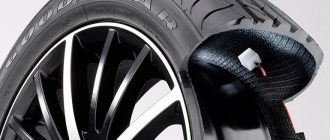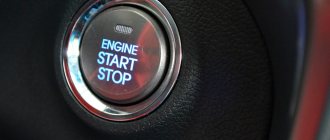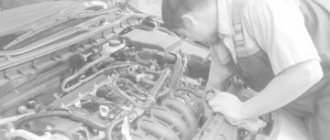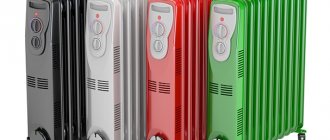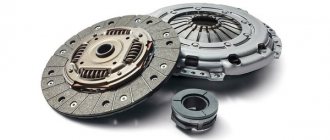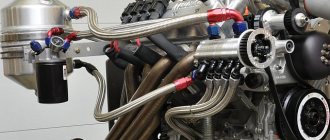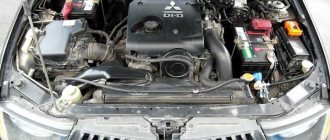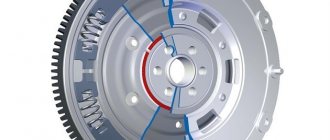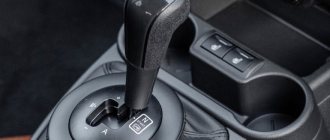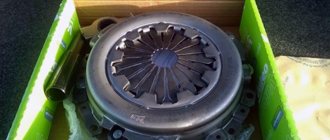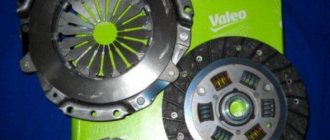There are also opponents of the method who completely reject all the arguments of its supporters. Their main argument is the well-known fact that air consists of 78% nitrogen, 21% oxygen and other gases. Question: why pump in an additional 15% nitrogen? It is unlikely that an additional volume of gas will be able to radically improve the performance characteristics of a car tire. Moreover, this service costs more.
Let's understand the situation, consider all the pros and cons of nitrogen in tires.
History of technology
In the automotive world, they started pumping nitrogen into tires quite a long time ago. True, this method was first used in the “royal” class of auto racing - Formula 1. However, like most other technologies, they are tested on race cars before manufacturers begin using them on production cars. In this case, an air-nitrogen mixture was used, rather than pure gas. The method was first used in the middle of the last century.
In the case of Formula 1, using this method provides at least one big advantage - increased safety. The fact is that if the car catches fire, the air from the burst tire acts as an oxygen supply, fueling the flame even more. If nitrogen is pumped into tires, this effect will no longer occur, meaning the risk of fire is reduced.
In the United States, nitrogen is used instead of air in tires in commercial vehicles. This is not a mandatory rule; many truck owners and carriers simply use alternative options.
In everyday life, cars are not often used to the limit of their capabilities, and fires occur very rarely. Therefore, it is not advisable to pump gas instead of air just for the sake of greater safety, but there are other advantages.
Introduction
Relatively recently, a new tempting offer has appeared in many service centers in Russia - inflating tires with nitrogen. It is worth noting right away that the service does not have domestic roots; a similar method is used in Europe and the USA for refilling tires of commercial vehicles or buses. The operating rules of any car do not say about the need for this procedure; most likely, this is the choice of the car owner himself. For the first time, wheels began to be pumped with nitrogen during Formula 1 races. A mixture of nitrogen and air filled the tires of racing cars, although according to the regulations for high-speed racing it is allowed to drive on ordinary air. Every car enthusiast has the right to decide for himself whether he needs such a procedure or not. If you listen to the opinion of the employees of the service station where this service is provided, nitrogen refilling is simply necessary, and the car owner will be told about the mass of advantages gained. However, most automotive experts are confident that this is nothing more than a new marketing ploy that allows service centers to simply siphon extra money from unscrupulous motorists. Let's deal with everything in order.
Advantages of the method
Inflating tires with nitrogen has both supporters and opponents. Moreover, they are present among professionals, including owners of tire stations and service stations, and among amateurs. The advantages of the method include:
- no gas leakage - wheels flatten less;
- reduced wheel weight - lower fuel consumption;
- no tire overheating;
- increased security;
- stable tire pressure;
- slowing down the aging of rubber wheel elements;
Real alternative
- Timely seasonal tire replacement that meets both legal requirements and common sense. Summer tires definitely roll easier!
- Before long trips on the highway, increase the tire pressure by 0.2 bar. It will be a little tougher, but noticeably more economical.
- Use lightweight wheels, not just any alloy wheels, but preferably forged ones; they often have a noticeably lower weight. In general, choose wheels not by design, but by weight. But to ensure lightness without sacrificing durability, look for certified rims.
- Use tires made using Energy saver technology.
Many manufacturers have these today. They have slightly lower rolling resistance thanks to the use of technologies designed specifically for resource conservation. - Choose tires using the results of the “Behind the Wheel” tire tests,
where each candidate’s rolling resistance is measured, among other things. - Install light-alloy (and really light) wheels of a larger diameter
and select the appropriate tires using a tire calculator, while maintaining the outer diameter of the previous wheel. Well, or a little more. - You drive a lot on the highway, but with a light load, or the gears in your car’s gearbox can be called “short”, such as, for example, in the Renault Logan or Lada Largus. That is, at 100 km/h the engine makes more than 3000 rpm in top gear. Then you can install tires with a slightly larger diameter.
This will make all gears a little longer and will save fuel.
Reduced fuel consumption
This is one of the most common reasons for using nitrogen instead of air. Its essence boils down to the fact that the specified gas is lighter than air, and accordingly, less weight of the wheel will lead to lower fuel consumption.
To do this, you need to understand the real numbers. A cubic meter of air that is pumped into tires weighs 1.29 kg, and a cubic meter of gas weighs 1.25 kg. A standard passenger car wheel holds about 75 grams of pure gas and 77 grams of air mixture. Therefore, the difference between fully inflated wheels will be a few grams, which is negligible for significant fuel savings.
The difference is almost unnoticeable - dirt between the treads or pebbles add much more weight to the wheel.
Myths and reality of nitrogen pumping
Every car enthusiast who knows this method of inflating tires has a definite opinion on this matter, and it does not always coincide with the facts advertised by consultants in service centers. Thus, numerous reviews from drivers about the use of nitrogen in the tires of their own cars indicate the following facts and myths:
Thus, no matter how carefully the vehicle is operated, wear always begins from the outside - when the treads come into contact with asphalt or other rubber elements come into contact with an aggressive environment. It is this part that will deteriorate much faster than the inner layer of the tire.
The same people who are trying to present these highly specialized methods of injecting pressure into the life of a simple car enthusiast are simply conducting commercial activities and trying to provide the most effective advertising campaign.
We can say with complete confidence that for an ordinary driver who operates his car on city roads or country roads without any competitive goals, this service is completely useless. They can always get by with practically free inflation of the wheels with atmospheric air, which can be done in any conditions - both at a tire shop, and just on the road if you have a small household compressor.
At the same time, the level of safety of the driver and passengers on the road while driving does not depend in any way on what to inflate the wheels with - nitrogen or air.
Source
Popular tire models
- Yandex.Market rating: Yandex.Market: 4.5
Goodyear Eagle F1 Asymmetric 3 SUV tiresSeasonality: summer Spikes: no Diameter: 17 / 18 / 19 / 20 / 21 / 22
- Yandex.Market rating: Yandex.Market: 4.5
Goodyear Eagle Sport TZ tires
Seasonality: summer Spikes: no Diameter: / 16 / 17 / 18
- Yandex.Market rating: Yandex.Market: 4.5
Goodyear EfficientGrip Performance Tires
Seasonality: summer Spikes: no Diameter: 15 / 16 / 17 / 18 / 19 / 20
- Goodyear UltraGrip Arctic 2 SUV Tires
Seasonality: winter Spikes: yes Diameter: 17 / 18 / 19 / 20 / 21
- Yandex.Market rating: Yandex.Market: 4.5
Goodyear UltraGrip Ice 2 tires
Seasonality: winter Spikes: no Diameter: 15 / 16 / 17 / 18 / 19
- Yandex.Market rating: Yandex.Market: 4
Goodyear Wrangler HP All Weather Tires
Seasonality: summer Spikes: no Diameter: 16 / 17 / 18 / 19
- Yandex.Market rating: Yandex.Market: 4.5
Goodyear Vector 4Seasons tires
Seasonality: all-season Spikes: no Diameter: 15 / 16 / 17 / 18
- Yandex.Market rating: Yandex.Market: 4
Goodyear EfficientGrip 2 SUV Tires
Seasonality: summer Spikes: no Diameter: 16 / 17 / 18 / 19 / 20
- Yandex.Market rating: Yandex.Market: 4.5
Goodyear UltraGrip Ice SUV Tires
Seasonality: winter Spikes: no Diameter: 16 / 17 / 18 / 19 / 20 / 21
- Yandex.Market rating: Yandex.Market: 4.5
Goodyear Wrangler All-Terrain Adventure tires with Kevlar
Seasonality: summer Spikes: no Diameter: 15 / 16 / 17 / 18 / 20
- Yandex.Market rating: Yandex.Market: 4.5
Goodyear EfficientGrip SUV Tires
Seasonality: summer Spikes: no Diameter: 16 / 17 / 18 / 19 / 20 / 21 / 22
- Yandex.Market rating: Yandex.Market: 4
Goodyear Eagle F1 Asymmetric SUV tires
Seasonality: summer Spikes: no Diameter: 17 / 18 / 19 / 20 / 22
- Goodyear UltraGrip Performance+ SUV Tires
Seasonality: winter Spikes: no Diameter: 16 / 17 / 18 / 19 / 20 / 21
- Yandex.Market rating: Yandex.Market: 5
Goodyear Vector 4Seasons Gen-3 SUV Tires
Seasonality: all-season Spikes: no Diameter: 16 / 17 / 18 / 19 / 20
Wheels flatten less
Stable pressure is another argument for fans to pump nitrogen into the wheel instead of regular air. In this case, the argument is the larger size of the gas molecule compared to the size of the oxygen molecule. Accordingly, oxygen seeps through microscopic cracks and holes in the tire faster. As a result, the pressure drops and the tire goes flat.
Yes it is. But do not forget that ordinary atmospheric air consists of 78% nitrogen, and only 21% oxygen. Therefore, when the pressure in the wheel drops, it is pumped up, thus adding even more nitrogen from ordinary air. After several years of operation, the wheel is almost completely inflated with gas alone.
Obvious disadvantages
In general, filling your tires with nitrogen is beneficial. It is not for nothing that this gas is widely used in circuit racing and rallying. There are only two disadvantages:
- decent price for the service;
- impossibility of pumping up and loss of nitrogen mixture in case of a tire puncture on the way.
Compared to regular air, the price of filling with nitrogen is 5–10 times higher, depending on the region. Knowing what real pros and cons this procedure provides, you will make the right decision about using the service. It definitely won't do any harm.
Source
Air or nitrogen: other advantages, “imaginary” or obvious.
Nitrogen practically does not expand when heated, so the pressure in the wheel will remain constant as the temperature changes. In contrast to this statement, it is worth noting that more than three quarters of the air is nitrogen. Other gases also do not expand much, so the difference in pressure between tires filled with air or nitrogen when heated is not too great to be taken into account.
Proponents of the method argue that the absence of oxygen provides additional protection to the material from aging. Yes, this is a fair point, but does it make any practical sense? Rubber is exposed to other factors - aggressive environments, moisture, sunlight, and so on. All this does not contribute to extending the service life, but no one is going to use tires forever. There are certain temporary operating indicators on which the gas used does not have any significant impact.
A lower noise level is indicated by a tire into which pure gas is pumped rather than atmospheric air. Yes, through simple measurements at a speed of 100 km/h, the noise level in the first case is 65 dB versus 68 dB in the second. Is it good or bad? It's just not noticeable - a difference of 3 dB is absolutely insignificant.
A wheel filled with nitrogen is less likely to explode. In fact, the wheel will explode only if the car is used mercilessly, which occurs very rarely in ordinary life. Moreover, in fact, the wheel does not explode, but bursts - there is a sharp loss of pressure when the tire structure is destroyed. And this can happen when hitting an object or obstacle.
Also, you should not pay serious attention to the advice of those who recommend checking the pressure in the tire with nitrogen less. Checking should be done as often as the manufacturer recommends, and the number of checks does not depend on the type of mixture. How long a wheel “holds” is largely influenced by the composition of the rubber and its condition. A normal tire can hold pressure for years without damage.
But metal corrosion is more pronounced when air is used. The oxygen it contains is an oxidizing agent. It enters into a chemical oxidation reaction even at low temperatures, affecting the wheel and rubber. This statement can be attributed to the truly positive aspects of nitrogen injection.
Advertising stunt
At a branded expensive tire service, almost any car owner, and especially the owner, will probably be offered to inflate their tires with nitrogen. There are a lot of arguments in favor of this procedure. Let's figure out which of them are true and which are fiction:
- The tire pressure will be stable because nitrogen hardly expands when heated.
But the air already contains 78% nitrogen, so the changes account for the rest of the gases, which also do not expand beyond measure. The difference in the coefficient of volumetric expansion is negligible with a significant figure in the fourth decimal place. - Nitrogen molecules are larger and therefore do not penetrate outward through the tire walls as quickly, keeping the pressure stable.
But do not forget that there is not so much oxygen with other gases - about 22%. And when they begin to evaporate, and we begin to pump up the tire, the nitrogen concentration will increase. So, a 5-6-year-old wheel develops an almost purely nitrogen “atmosphere” inside. - A wheel filled with nitrogen is lighter than a wheel inflated with atmospheric air.
This saves fuel. Simple calculations show that the wheel of a mid-size crossover will be lighter by only a few grams. How much do the pebbles stuck in the tread weigh? Let's clean the tread more often, especially since tire design engineers highly recommend it. - The absence of oxygen protects the tire material from premature aging.
Tire manufacturers support this thesis, but you don’t hope that after a century your tires will be located on a pedestal, like the wheels of Lenin’s armored car. Wear and aging of the outer layers of rubber under the influence of the sun, ozone, and moisture occurs much faster. - Better road grip and greater safety due to stable performance.
I don’t agree: you still need to check the tire pressure periodically, and with each “puff” precious nitrogen will be released. And you can’t let yourself down. This is how servicemen strive to tie a car enthusiast to their workshop even for such an insignificant problem as checking pressure and inflating a tire.
